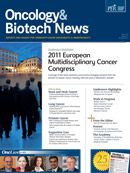Publication
Article
Oncology & Biotech News
Hospitals for Vulnerable Patients Less Likely to Provide Optimal Lung Cancer Care
Author(s):
New data show that patients treated for lung cancer at high safety-net burden hospitals undergo curative-intent surgery significantly less often than individuals treated at low safety-net burden facilities.

Katherine S. Virgo, PhD
New data show that patients treated for lung cancer at high safety-net burden hospitals undergo curative-intent surgery significantly less often than individuals treated at low safety-net burden facilities.
The Institute of Medicine of the National Academies defines healthcare safety-net facilities as institutions that deliver a significant level of medical care and other services to vulnerable patients, such as those who lack health insurance or who are on Medicaid.
Katherine S. Virgo, PhD, with the American Cancer Society in Atlanta, Georgia, and colleagues examined the relationship between hospital safety-net burden and receipt of curative-intent surgery for both black and white adults with early-stage non—small cell lung cancer (NSCLC). All patients had been treated between 2003 and 2005 at institutions that were accredited by the American College of Surgeons’ Commission on Cancer.
Roughly 85% of incident lung cancers are categorized as NSCLC, and surgical resection can be curative provided that treatment starts at an early stage.
Research has shown that black patients diagnosed with early-stage NSCLC are less likely than white patients to undergo surgery and are more likely to undergo resection at low-volume hospitals and to die in the hospital or within 30 days of their operation. However, there is scant information on the impact of hospital safety-net status on patient receipt of appropriate treatment.
In the present study, results in 52,853 evaluable patients showed that 67.1% of patients treated at high safety-net burden facilities had curative-intent surgery versus 77.1% of those treated at low safety-net burden centers (odds ratio 0.69; 95% CI, 0.62-0.77).
The results were maintained even after the investigators adjusted for multiple factors that decreased the likelihood of curative-intent surgery, including race, insurance status, disease stage, female gender, and other hospital characteristics.
Virgo and associates pointed out that the lack of consensus on the definition of safety-net status may represent a possible shortcoming of their study. They defined safety-net burden as “the percentage of uninsured and Medicaid-insured patients that hospitals treat, categorized as low, medium, and high,” and maintain that their definition is the one that is closest to that proposed by the Institute of Medicine. A lack of information on individual surgeon characteristics, such as volume or specialty, may also be a limitation.
The authors said that more studies are needed to determine if the relationship between hospital safety-net burden and curative-intent surgery is the same for other cancer sites besides lung cancer, and whether safety-net burden is associated with receipt of multimodality therapy for patients with advanced disease. It would also be helpful to explore the link between hospital safety-net burden and hospital characteristics, such as bed size, ownership type, revenue margins, availability of diagnostic equipment, case mix, referral patterns, and staffing patterns.









